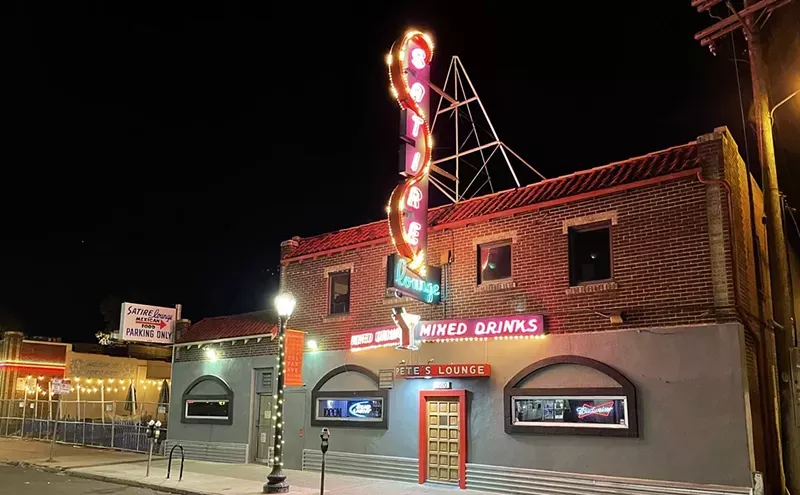See also: Beth Malone on Molly Brown, Playing Strong Historical Characters, and Coming Back to Denver
Westword:How did Molly Brown's original story became a musical?Dick Scanlan: Part of the answer to that long predates me. The Unsinkable Molly Brown was originally conceived as a musical play in the mid-1950s, before I was born. Eventually it opened on Broadway in 1960, where it ran for maybe a year and a half. My involvement with it began in 1994, while I was adapting Thoroughly Modern Millie for the stage and I was working with the man who wrote the movie Thoroughly Modern Millie, who also wrote the original book to the musical Unsinkable Molly Brown. He brought up what he called "fixing Molly" when we were done "fixing Millie." At that time I wasn't interested. I had read the script and it just didn't speak to me. He passed away in 1996, and his estate shortly thereafter asked me if I would revise it. I read the script again and it just didn't speak to me. And then in 2005 I got a call from Freddie Gershon, who is the head of Music Theatre International, which is the company that licenses a lot of the great American musicals -- including Thoroughly Modern Millie but also The Unsinkable Molly Brown --- saying they got a lot of requests to look at the material. I told him, "Freddie, I've been asked many times. It just isn't for me, I just don't respond to it."
I hung up the phone, and I was in my office. I said to someone I was working with, "I feel like Molly Brown is always hanging over my head." She reached over my head and took a picture off the wall of a photo I have of Richard Morris standing underneath the original marquee of the musical of Molly Brown. And she said, "You hung it over your own head." At that point, I called Freddie back and said let me think about this another way. It took about six months, but eventually I got the idea really researched and in trying to understand who the historical Molly Brown was, I understood more about how they created the story. Almost as soon as I started doing that, I became very excited by the story of the historical Margaret Tobin Brown opposed to the mythologized Margaret Tobin Brown. That began long before the Broadway musical, by the way, that began in the '30s, a year or two after she died in a book by Gene Fowler called Timberline. He wrote this completely apocryphal version of who she was and her life that sort of became popular legend, but was, in fact, not true. I became more interested in the real Margaret Brown.
What was your process in updating the script with this newer, historically accurate information?
I did a tremendous amount of research in Leadville and down in Denver. I read all kinds of books. You sort of make long lists of the things that interest you and excite you. Lives are really dramatic, so even if you are basing it on a historical person, you still have to create a story with a beginning, a middle and an end, which lives don't really have. So then I had to take the information I had accrued and the facts of her life and try to create something that was holistic. For example, I remember reading a contemporary account of Leadville in the 1880s and it talked about how in a three-block radius the writer heard twenty different languages being spoken. Miners would come from all over the world. There was actually very little racial tension in those communities because, as long as the guy next to you knew what he did, that's what you cared about. If he didn't know what he did, your lives were in jeopardy. That was fascinating to me. And wouldn't it be fun to have a story in this play of people who had come from lots of different places and formed a family? Really the way theater people do, quite honestly. So things like that would become factors in how I would conceive the story of the play.
What's your favorite fact that really surprised you going through all that historical information?
That would certainly be one of them. I had always thought of miners, quite honestly, as sort of rednecks. I'm not saying that with any pride; that was my own ignorance. That was my own complete misunderstanding of what mining was and is, and the kind of tremendous courage and resourcefulness that people had to have to be miners. And in many cases, a tremendous kind of intelligence. The fact that J.J. Brown, Margaret Brown's husband, became a millionaire overnight (that's actually a true fact) because he was a laborer and in his spare time read books about geology. When there was this terrible depression in the West because the price of silver was devalued -- I didn't know anything about any of this, I found it fascinating -- virtually overnight the price of silver dropped from $30 an ounce to $.12 an ounce. Unemployment in silver towns was 95 percent! There was gold to be mined, but no one could quite figure out how to do it because it tended to be under very soft sand. J.J. Brown, from all the books he read, had an idea. And he went to his boss and said I have an idea; if it works we could actually reach the gold. And of course they did. Virtually on the spot they made him part-owner of the mine which is how they became millionaires instantaneously.
The other thing I thought was fascinating was that, when their wildest dreams came true and they went from being working-class people to millionaires in a moment, that was actually the beginning of real tension in their marriage. Margaret Tobin Brown had always been a very politically oriented person with a tremendous social conscience, but when she was working class that just meant that she worked in a soup kitchen or she started a literacy league or what have you. Once she had money, she could do it in a very public way with a very well-publicized platform, and that became an issue for her husband, who was trying to do business with very conservative customers. And it was a problem that his wife was out there championing rights for unwed mothers and laborers and immigrants and juvenile criminals and all kinds of people.
Another thing that interested me was that a hundred years ago, devoutly Christian people like Margaret Tobin Brown (because she was a devout Catholic) tended to be socially progressive. They tended to be the social progressives in the country. They took the teachings of Jesus to mean that you helped people who have less than you. They were the people who were always championing the rights of the underdog, and we live in a very different world now. These are gross generalizations, but the perception is that people who are devoutly religious today are socially conservative. And it was the exact opposite a hundred years ago.
Is there a favorite part that you have in The Unsinkable Molly Brown revival that you've helped bring to life?
I wouldn't say there is a favorite part. There is a lot of it that I like. I think the love story is very strong and seeing where they get together and the scene where they kind of break apart. The kookiest thing is what we call her 11 o'clock spot, which is her song called "Wait For Me." It's an entirely new lyric by me set to a song that Meredith Wilson wrote for the Department of Defense in support of chemical warfare. The original song is called "Fire Up" and it's a march, a very staunch march. We've changed it to a very tender power ballad called "Wait For Me," where she's on the lifeboat after the Titanic and then on the Carpathia begging her husband, who has taken ill, to live. To hold on, so she can get there and make him better. She's afraid he's not going to make it. They've been estranged and she wants to try and make him right and make them right. It's so funny that that song, which has such a beautiful melody, was originally conceived for a very different purpose.
You must be really excited to see the show in its final form.
Absolutely. It's been a thrill, it really has. I'm very proud of it. And it's been fun; she's a very fun character. She's indomitable. She's got a lot of hutzpah, a lot of drama, really makes things happen.
The Unsinkable Molly Brown continues at the Stage at the Denver Performing Arts Complex until October 26. Find the show schedule and ticket information here.
Follow @WestwordCulture












